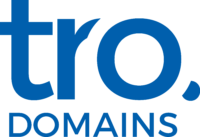Introduction to Budget-Friendly Website Creation
In today’s rapidly evolving digital landscape, establishing a personal website is more accessible and affordable than ever before. Thanks to an array of cheap Website Builders, you no longer need to invest heavily to create an appealing online presence. These budget-friendly tools are engineered to cater to individuals with varying degrees of technical expertise, making it possible for everyone to craft a professional-looking site.
Whether your goal is to showcase your portfolio, share your thoughts via a blog, or present your digital CV, cheap website builders are designed to simplify the process. These platforms offer a variety of pre-designed templates and user-friendly interfaces, allowing you to build an attractive personal website without extensive coding knowledge.
The affordability of these Website Builders does not compromise the quality of the end product. Many offer robust features and customisation options, enabling you to tailor your site to match your personal style and objectives. From adjusting colour schemes to selecting the perfect typography, these tools empower you to create a site that truly reflects your individuality.
One of the primary advantages of using a cheap Website Builder is the ease with which you can get started. The majority of these platforms offer step-by-step guides and drag-and-drop functionality, ensuring a smooth and intuitive user experience. This means you can focus on the creative aspects of your site, rather than getting bogged down by technical complexities.
Additionally, many of these builders come with integrated features that enhance the functionality of your website. For instance, you can add contact forms, social media buttons, and even e-commerce capabilities with minimal effort. This integration ensures your site is not only visually appealing but also highly functional and engaging for visitors.
For those concerned about ongoing costs, cheap website builders often provide various pricing plans to suit different budgets. Whether you opt for a free version with basic features or a paid plan with advanced functionalities, there is a solution that fits your financial constraints. This flexibility allows you to scale your website as your needs evolve, ensuring long-term viability without significant financial strain.
Moreover, these platforms often include hosting services as part of their packages, simplifying the process further. You won’t need to worry about finding a separate hosting provider or managing complex server settings. This all-in-one approach saves both time and money, making it easier to focus on building and maintaining your site.
Another critical factor to consider is the availability of customer support. Cheap Website Builders typically offer various support options, including live chat, email, and comprehensive knowledge bases. This ensures you have access to the assistance you need, should you encounter any challenges during the website creation process.
As more individuals and businesses recognise the importance of having an online presence, the demand for affordable website creation tools continues to grow. By leveraging these budget-friendly solutions, you can establish a compelling and professional personal website that meets your needs without breaking the bank.
In summary, cheap Website Builders offer a practical and cost-effective solution for anyone looking to create an attractive personal website. With a range of features and customisation options, these tools make it easy to design a site that stands out, regardless of your technical skill level. Whether you’re a budding blogger, a freelancer showcasing your portfolio, or a professional presenting your digital CV, a cheap website builder can help you achieve your online goals efficiently and affordably.
Choosing the Right Website Builder
When selecting a Website Builder, consider factors such as ease of use, customisation options, and cost-effectiveness. It’s essential to choose a platform that aligns with your technical skills and design preferences. The website builder market has grown significantly, reaching approximately USD 1.8 billion in 2022, demonstrating the increasing demand for these services.
Among the numerous options available, some of the most popular cost-effective Website Builders include Wix, WordPress.com, and Weebly. In 2018, Wix emerged as the leading website builder, capturing over 22% of the global market share. Each platform offers unique features and pricing plans, so take the time to compare them and decide which best suits your needs.
Wix is well-known for its user-friendly drag-and-drop interface, making it an excellent choice for beginners. The platform offers a wide range of templates and design options, allowing you to create a professional-looking website with minimal effort. Additionally, Wix provides various pricing tiers, including a free plan with basic features, making it a budget-friendly option.
WordPress.com, on the other hand, is a versatile platform that caters to both novices and more experienced users. It offers extensive customisation options through themes and plugins, enabling you to tailor your site to your exact specifications. While WordPress.com does have a learning curve, the investment in time can be worthwhile if you’re looking for a highly customisable website. It also offers different pricing plans, including a free version, to accommodate various budget constraints.
Weebly is another popular choice, particularly for those who value simplicity and ease of use. Its intuitive drag-and-drop editor makes website creation straightforward, even for those with little to no technical knowledge. Weebly’s pricing plans are also competitive, offering a free tier as well as affordable paid options with additional features and capabilities.
When evaluating these platforms, it’s crucial to consider the specific needs of your website. For instance, if you plan to run an online store, look for a website builder that offers robust e-commerce features. Both Wix and Weebly provide integrated e-commerce solutions, allowing you to set up an online shop with ease. WordPress.com also supports e-commerce through various plugins, giving you flexibility in how you manage your online store.
Support and resources are another critical factor to consider. Many Website Builders offer extensive customer support through live chat, email, and detailed knowledge bases. This support can be invaluable, particularly if you encounter any issues during the website creation process. Additionally, some platforms have active community forums where users can share tips and advice, further aiding your website development journey.
Before making a final decision, take advantage of free trials or demo versions offered by these website builders. This hands-on experience will give you a better understanding of each platform’s capabilities and help you determine which one aligns best with your needs and preferences. By carefully assessing your options and considering the key factors discussed, you can select a website builder that not only fits your budget but also helps you create a stunning and functional personal website.
Design Tips for an Attractive Website
Design plays a crucial role in creating an engaging and visually appealing website. To capture your audience’s attention, focus on key design elements such as colour schemes, typography, and imagery. Ensure your website is easy to navigate, with a clear layout that guides visitors to the most important sections.
Utilising pre-designed templates is a great way to start, and many Website Builders offer a variety of these options. For example, “Squarespace features a lot of great templates,” according to Website Builder Expert, making it easier to design a visually appealing website. Customise these templates to reflect your personal style by adjusting colours, fonts, and images to make your site truly unique.
To make your website visually cohesive, select a colour palette that aligns with your personal or brand identity. Stick to a limited colour scheme, typically two to three main colours, to maintain a clean and professional look. Consistency in colour usage helps create a unified aesthetic across all pages.
Typography is another critical design element. Choose fonts that are easy to read and match the tone of your content. Mixing too many fonts can make your website look cluttered and unprofessional. Limit yourself to two or three complementary fonts—one for headings, another for body text, and possibly a third for special highlights or accents.
Imagery can significantly enhance the visual appeal of your website. High-quality images can make a substantial difference, so avoid using low-resolution or generic stock photos. Consider using your own photos or sourcing from reputable free stock photo websites. Additionally, ensure that images are optimised for web use to avoid slowing down your site’s loading times.
White space, or negative space, is an often overlooked but crucial aspect of web design. Effective use of white space can make your content more readable and your overall design more aesthetically pleasing. It prevents your website from appearing too busy and allows important elements to stand out.
Interactive elements such as buttons, forms, and navigation menus should be easily accessible and intuitive to use. These elements guide users through your website and improve their overall experience. Ensure buttons are clearly labelled and forms are straightforward to complete.
A responsive design is essential in today’s mobile-driven world. Make sure your website looks and functions well on various devices, including smartphones and tablets. Many website builders offer responsive templates that automatically adjust to different screen sizes, ensuring a seamless experience for all users.
Animations and visual effects can add a dynamic touch to your website, but use them sparingly. Overusing animations can be distracting and may negatively impact loading times. Subtle animations, like hover effects on buttons or smooth scrolling, can enhance user engagement without overwhelming the viewer.
Consistency in design elements across your website helps create a professional look. Stick to a unified style guide for colours, fonts, and imagery to ensure all pages feel like part of a cohesive whole. This consistency extends to the tone of your content as well; a unified voice helps build trust and reliability.
Incorporating social proof, such as testimonials or case studies, can add credibility to your website. Displaying real feedback from satisfied users or clients can be very persuasive to new visitors. This can be seamlessly integrated into your design, perhaps in a dedicated section or as part of your homepage.
Content Creation on a Budget
Creating content for your website doesn’t need to break the bank. By leveraging free and low-cost resources, you can develop high-quality material that enhances your site’s appeal and effectiveness.
For visual content, consider using free stock photo websites like Unsplash or Pexels, which offer a plethora of high-quality images that can give your site a professional look without the expense. If you prefer a more personalised touch, tools like Canva allow you to create custom graphics and visuals with ease. Canva offers a range of free templates and design elements that can help you craft unique imagery tailored to your website’s theme and aesthetic.
When it comes to written content, you don’t necessarily need to hire a professional writer. With a bit of effort and creativity, you can produce engaging and effective copy that resonates with your audience. Start by defining your target audience and tailoring your content to meet their interests and needs. Use a friendly and conversational tone to build a connection with your readers and make your content more relatable.
Blogging is an excellent way to add value to your website without incurring significant costs. Regular blog posts can help drive traffic to your site, improve your search engine rankings, and provide useful information to your visitors. Choose topics that are relevant to your niche and offer insights or solutions to common problems. Consistency is key, so establish a blogging schedule that you can realistically maintain.
Testimonials and user-generated content can also enhance your website while keeping costs low. Reach out to satisfied customers or clients and ask for their feedback, which you can then feature on your site. This not only adds credibility but also provides fresh content that can engage potential customers. Encourage users to submit reviews, photos, or stories related to your products or services, and showcase these contributions to build a sense of community.
For video content, consider using your smartphone or a basic camera to create short, informative videos. There are numerous free video editing tools available, such as iMovie or DaVinci Resolve, which can help you polish your videos without spending money on professional editing software. Video content can be particularly effective for tutorials, product demonstrations, or behind-the-scenes glimpses of your business.
Social media is another valuable resource for content creation. Platforms like Instagram, Twitter, and LinkedIn can serve as both inspiration and distribution channels for your content. Share your blog posts, images, and videos on social media to reach a wider audience and drive traffic back to your website. Engaging with your followers on social media can also provide insights into what type of content resonates most with your audience, helping you refine your strategy over time.
Finally, don’t underestimate the power of collaboration. Partner with other bloggers, influencers, or businesses in your niche to create guest posts, co-host webinars, or produce joint content. This can expand your reach and provide fresh perspectives, all while sharing the workload and reducing individual costs.
By taking advantage of these budget-friendly strategies, you can create compelling content that enriches your website and connects with your audience, all without overspending.
Optimising for Performance and Visibility
For your website to reach its intended audience, optimising performance and visibility is paramount. Begin with fundamental SEO practices such as employing relevant keywords and crafting descriptive meta tags. These elements improve search engine rankings and make it easier for users to find your site. Also, ensure your website is mobile-friendly, as a significant portion of web traffic now comes from mobile devices.
Incorporate tools and plugins designed to enhance your site’s performance. For instance, caching plugins can significantly speed up your website by storing static versions of your pages, reducing the load on your server. Similarly, image optimisation plugins can compress images without compromising quality, ensuring faster loading times. These improvements not only provide a better user experience but also contribute positively to your SEO efforts.
Regularly monitoring your website’s performance is essential. Tools like Google Analytics and Google Search Console offer valuable insights into how users interact with your site, helping you identify areas for improvement. For example, high bounce rates may indicate issues with page loading speeds or content relevance, prompting you to take corrective action.
Link building is another crucial aspect of improving your website’s visibility. Aim to acquire high-quality backlinks from reputable sites within your niche. These links act as endorsements, signalling to search engines that your site is a credible source of information. You can achieve this by creating valuable content that others naturally want to link to, or by reaching out to industry influencers and websites for guest blogging opportunities.
User experience (UX) is equally important in optimising your website. A clean, intuitive design makes it easier for visitors to navigate, reducing frustration and encouraging them to spend more time on your site. Pay attention to site architecture, ensuring that your most important pages are easily accessible. Internal linking also helps guide users through your content, enhancing their overall experience and boosting your SEO.
Page load speed is a critical factor that affects both user satisfaction and search engine rankings. Slow-loading pages can deter visitors, leading to higher bounce rates. Use tools like GTmetrix or Pingdom to analyse your site’s speed and identify bottlenecks. Simple tweaks, such as minimising HTTP requests, leveraging browser caching, and enabling compression, can make a significant difference.
Another aspect to consider is the use of structured data. Implementing schema markup helps search engines understand your content better, leading to enhanced visibility through rich snippets in search results. These snippets can include additional information like reviews, ratings, and event dates, making your listing more attractive to potential visitors.
Content freshness also plays a role in maintaining visibility. Regularly updating your website with new content signals to search engines that your site is active and relevant. This can be achieved through blogging, news updates, or adding new products or services. Fresh content not only keeps your audience engaged but also provides more opportunities to target relevant keywords.
Social media integration is a valuable strategy for driving traffic to your website. Share your content across various social platforms to reach a broader audience and encourage social sharing. This not only boosts your site’s visibility but can also lead to additional backlinks and improved SEO performance.
Lastly, pay attention to security features. A secure website not only protects user data but also builds trust with your audience. Implementing HTTPS through an SSL certificate is essential, as search engines give preference to secure sites.
Maintaining and Updating Your Website
Keeping your website current and secure is vital for its long-term success. Regular updates not only maintain the interest of your audience but also ensure your site runs smoothly and securely. Implementing a content update schedule can help you manage this effectively, ensuring that your site remains engaging and relevant.
Security is paramount, especially if your website involves collecting personal information from users. Utilise SSL certificates to encrypt data and safeguard user privacy. Regularly update your website’s software, plugins, and themes to protect against vulnerabilities and potential threats. Automatic updates, where available, can be a helpful tool in ensuring you’re always running the latest versions.
Backing up your website on a regular basis is another essential practice. Many Website Builders and hosting services offer automatic backup options, making it simple to restore your site in the event of data loss or a security breach. Ensure that backups are stored securely and can be easily accessed if needed.
Monitor your website’s performance regularly using tools like Google Analytics. These insights can help you identify any issues that may affect user experience, such as slow loading times or broken links. Addressing these issues promptly ensures that your site remains user-friendly and efficient.
In addition to technical updates, periodically reviewing and refreshing your content is crucial. This includes updating outdated information, adding new blog posts or articles, and refining your site’s layout and design as needed. Keeping your content fresh not only benefits your users but also helps improve your site’s search engine rankings.
Engage with your audience by encouraging feedback and actively responding to comments or queries. User feedback can provide valuable insights into areas that may need improvement, helping you to make informed updates and enhancements.
Lastly, stay informed about the latest trends and best practices in web design and development. Joining online forums, following industry blogs, and participating in webinars can provide you with new ideas and strategies to keep your website at the forefront of innovation.
By consistently maintaining and updating your website, you can ensure it remains a valuable and trusted resource for your audience, fostering long-term engagement and success.



